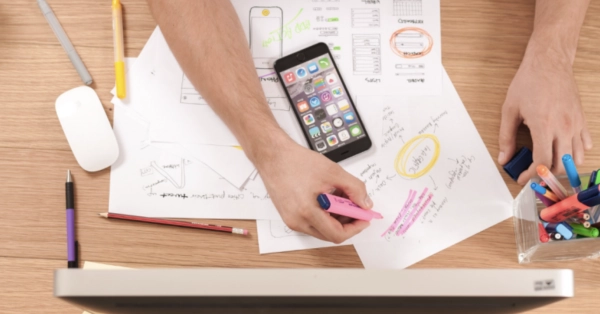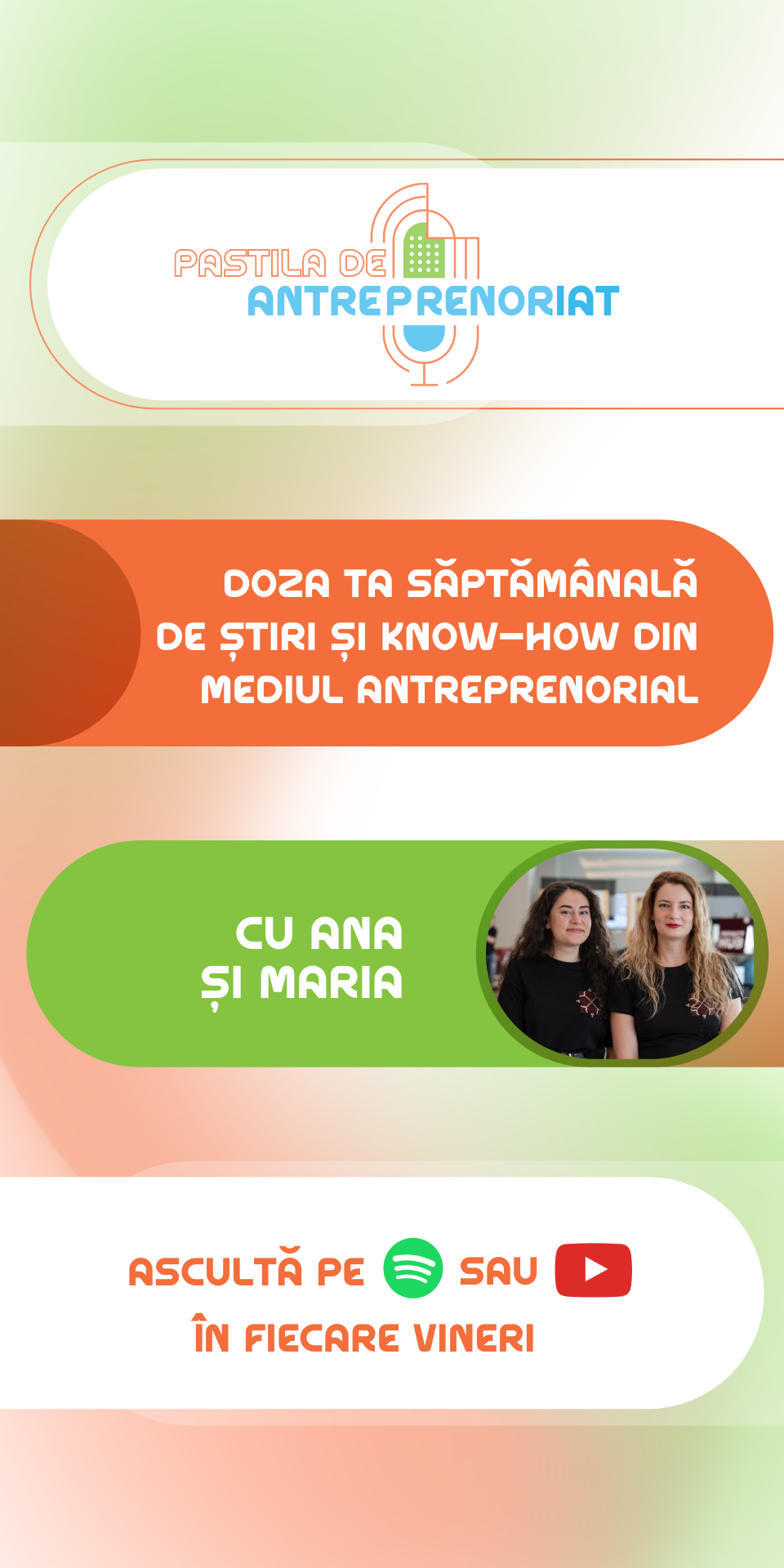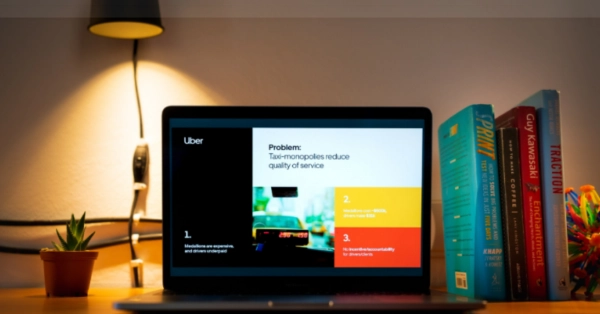The most challenging part when you establish your business is starting on the right path. In other cases, the difficult part is viewing what you do, your creative resources or projects, as a business and not only as a personal mission.

But the process can be actually very simple, provided you use the right tool. Business model canvas can help you gain clarity on the business part of what you do, step by step. Find out below how to fill it out.
What exactly will you learn in this article?
- What is a business model canvas and its components
- How to run a market research and get insights from your potential clients + what questions are the most suitable
Whether you’ve just decided to set up your own business, you feel it’s the time to pivot your business to the current pandemic reality or you’ve just realized you need a different approach in order to become more resilient, you can start by using Business Model Canvas – probably the most popular tool in the industry.
Why is the type of business model you choose so important?
Because a business model is a decision model, all the decisions you make need a certain amount of discipline in terms of organization & costs. Imagine the business model as a map – it's only useful if you use it. If you do, you can find out more about:
- product-market fit
- the sustainability of your business
- scalability
What is a Business Model and how can it help you?
The Business Model Canvas (BMC) is a key tool for any entrepreneur, regardless of thein industry. It can be used to test out if your business model will be successful while identifying the strengths and weaknesses of your business model.
For creative entrepreneurs, the BMC can be an essential starting point for growing resilience and building projects that are not just culturally significant, but they are also rewarding for their creators and their overall wellbeing.
Like we’ve shown in the previous article, you should consider changing your business model as often as your business needs to until you find ”the one”. We recommend that you create many versions of your canvas and test each one of them. The BMC consists of 9 sections and the secret is to identify and optimize all links you find between the 9 elements:
Customer segments
What are the types of customers you want to have? What are their needs? How can you (or your product/service) help them further? You might want to find specific information about your potential clients (not the very general information such as “men and women from urban areas, aged 20 – 60 years, medium to high income, who graduated university”; this is not a very specific segment of prospects).
Think about the easiest segments that you can reach (having in mind all the communication channels you use, your team, your infrastructure etc.). Some entrepreneurs tend to generalize, stating that their product/service is for everybody, but the reality is that the resources (time & money) they need to reach their potential customers are quite limited for that highly ambitious objective.
Your value proposition
You can easily identify the value of your product/service by simply using the insights from the market research you conducted in the previous step. Then you should ask yourself - how can your product come to help? What’s different about what you offer? Why would your clients choose you and not your competitors?
You need to know very well what’s your differentiating factor. The reason why people buy/use your products/services might easily determine the product–market fit, if you can identify whether the product really matches with what the clients want and need.
Distribution channels
Are they offline or online? Why use one instead of the other? What’s involved in keeping them relevant (costs, time, human resources, other partners that need to be involved)?
Think about how your potential clients find out about you and how you reach them. Here you need to take into consideration all your customer touchpoints – from communication to distribution.
The relationship you establish with your customers
It’s rather important to keep in mind how your product reaches the customers and what kind of relationship you want to have with them.
You should decide how personal this relationship should be, how well you need to know their needs and how you can find that out (if there is a way to automate this process or maybe you should set it manually).
Your revenues
All those stated above lead to your actual revenue. Basically, after you fill out half of your business canvas, you know how you make money. In other words, you identify your monetization model.
This model will lead you to better organize your costs, and that is because even when you make money, you lose some on the way (either for physical transactions - when you need to pay an employee, taxes or for online transactions - where you have all sorts of fees to pay). It will also help you set and organize the whole payment process, which immediately influences the clients’ experience and comfort while purchasing something.
The key resources you need
Ask yourself what are those resources that will help you maintain a sustainable, resilient business for a longer period?
Key activities
- What more can you do to live up to your value proposition?
- What are some notable activities that influence your performance?
Key partners
Who are those partners that might help you start and further develop your business? These people are those who offer you the support you need to perform better – as they might even take over some of the work you need to do to reach your customers or they could be the ones that might intermediate this process.
Cost efficiency
After you take into consideration all the aspects stated above, then you can better understand and determine what are your costs and finally, decide if your business is really sustainable.
Now it’s time to let your customers know all about you!
Now that you have all the information and insights to turn your idea into a real business, it’s time for you to reach out to the world and look out for your potential customers. Get to know them through asking the right questions and find out what are those behaviors that make them click. You can do this by conducting interviews – through online forms (you’ll find some useful examples at the end) or face to face, if possible.
- You can further validate your idea, but you also need to ask yourself if it can become a sustainable business.
- Don't get discouraged if the answers you get from your potential customers are different from what you initially planned – in fact, this is a lot more useful.
- Having your assumptions challenged especially when you didn’t get to invest too much in a non-viable idea will give you the chance to adapt and adjust at the right time.
- If you’re just getting started, then all the information you got from the users you tested on might be of great help to make you see, for example, if you’re headed in the wrong direction (meaning your solution doesn’t address the problem you thought you identified).
- You can also gather precious insights if you already have some clients, as they might tell you why they’d give up on a certain product, how you can improve yours and how you can identify new business opportunities.
Given the pandemic situation, when it’s more difficult to reach your potential customers, remember there are a lot of alternative tools you can use:
- Tools for online forms: Google Forms, Microsoft Forms, Survey Monkey, Typeform etc.
- Tools for online interviews: Zoom, Google hangouts, Microsoft Teams etc.
Some of them are free to use, while some others offer only certain free features or have a limited number of questions/participants or answers you can receive.















